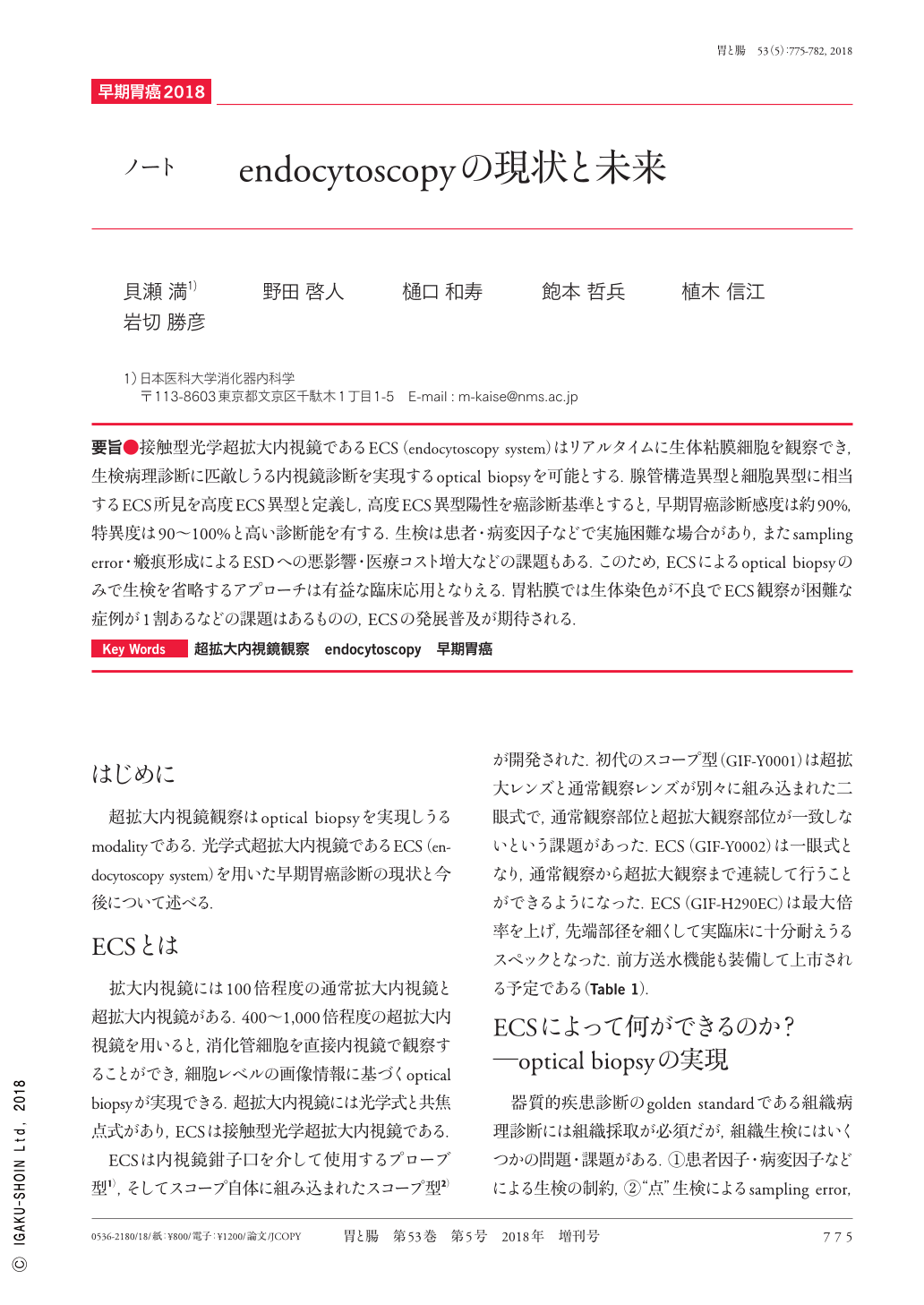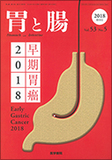Japanese
English
- 有料閲覧
- Abstract 文献概要
- 1ページ目 Look Inside
- 参考文献 Reference
要旨●接触型光学超拡大内視鏡であるECS(endocytoscopy system)はリアルタイムに生体粘膜細胞を観察でき,生検病理診断に匹敵しうる内視鏡診断を実現するoptical biopsyを可能とする.腺管構造異型と細胞異型に相当するECS所見を高度ECS異型と定義し,高度ECS異型陽性を癌診断基準とすると,早期胃癌診断感度は約90%,特異度は90〜100%と高い診断能を有する.生検は患者・病変因子などで実施困難な場合があり,またsampling error・瘢痕形成によるESDへの悪影響・医療コスト増大などの課題もある.このため,ECSによるoptical biopsyのみで生検を省略するアプローチは有益な臨床応用となりえる.胃粘膜では生体染色が不良でECS観察が困難な症例が1割あるなどの課題はあるものの,ECSの発展普及が期待される.
ECS(endocytoscopy system), a system for optical ultra-high-magnification endoscopy, visualizes living gastrointestinal cells and enables the endoscopic assessment of histology samples in real time(endoscopic optical biopsy). If high-grade atypia, as demonstrated by ECS, is used as a criterion for the diagnosis of gastric cancer, the diagnostic accuracy is high:the sensitivity is 90%, and the specificity is 90-100%. Occasionally, biopsy sampling is not possible due to specific characteristics of the patient or lesion. Moreover, ESD(endoscopic submucosal dissection)could be more difficult due to scar formation, increasing the burden of medical cost. Therefore, the sequence of first performing an optical biopsy followed by endoscopic treatment without biopsy sampling may be a beneficent pathway for medical practice. Although in around 10% of cases ECS cannot visualize cells because of poor vital staining, it would be a promising modality and may be widely used in the near future.

Copyright © 2018, Igaku-Shoin Ltd. All rights reserved.


